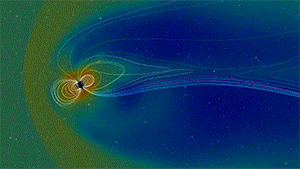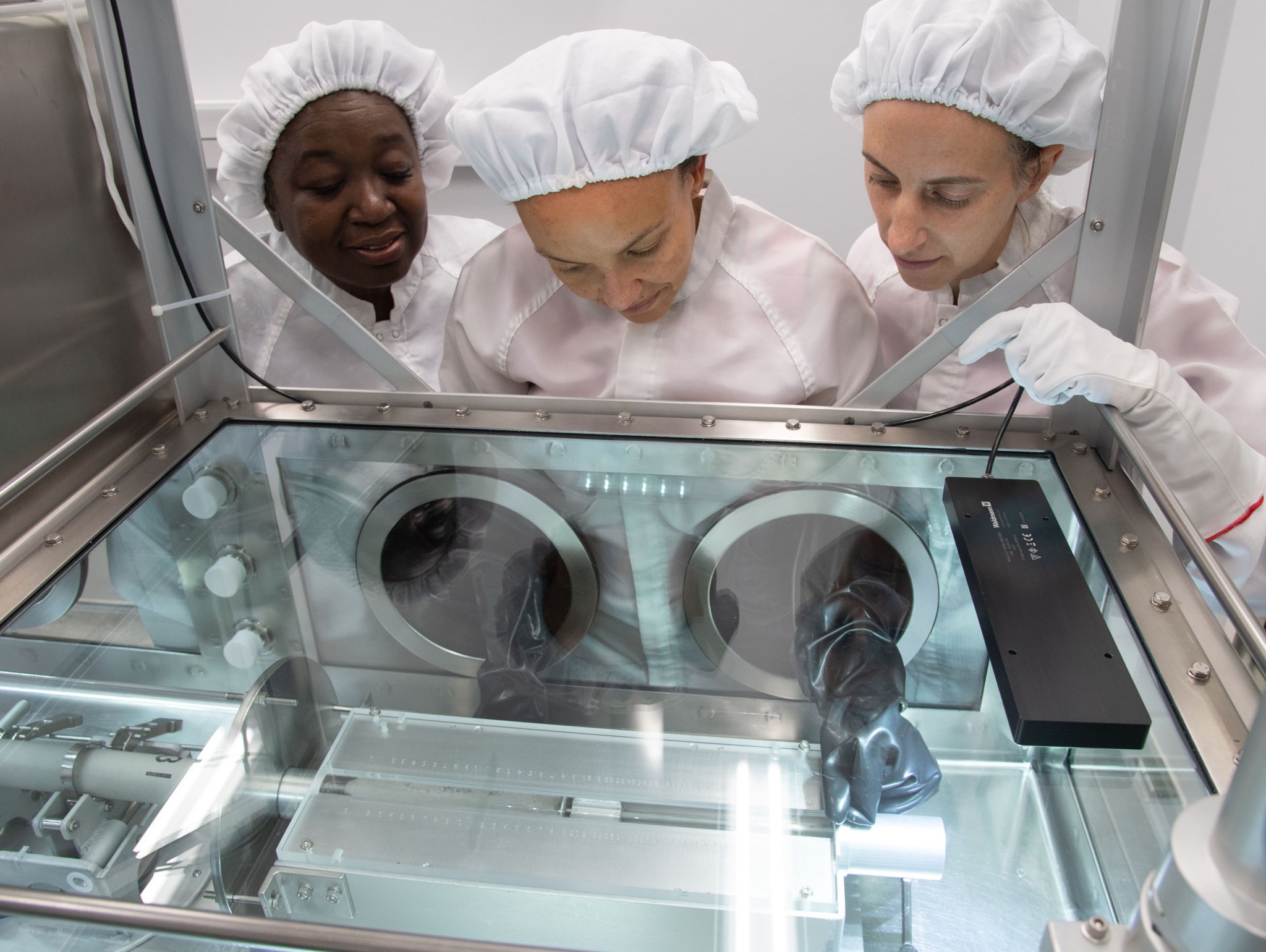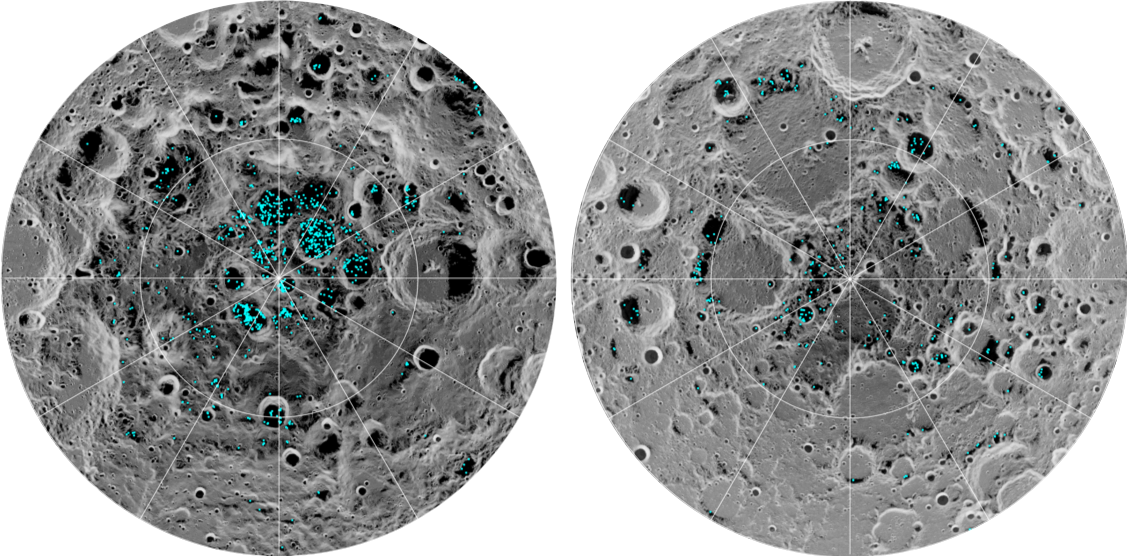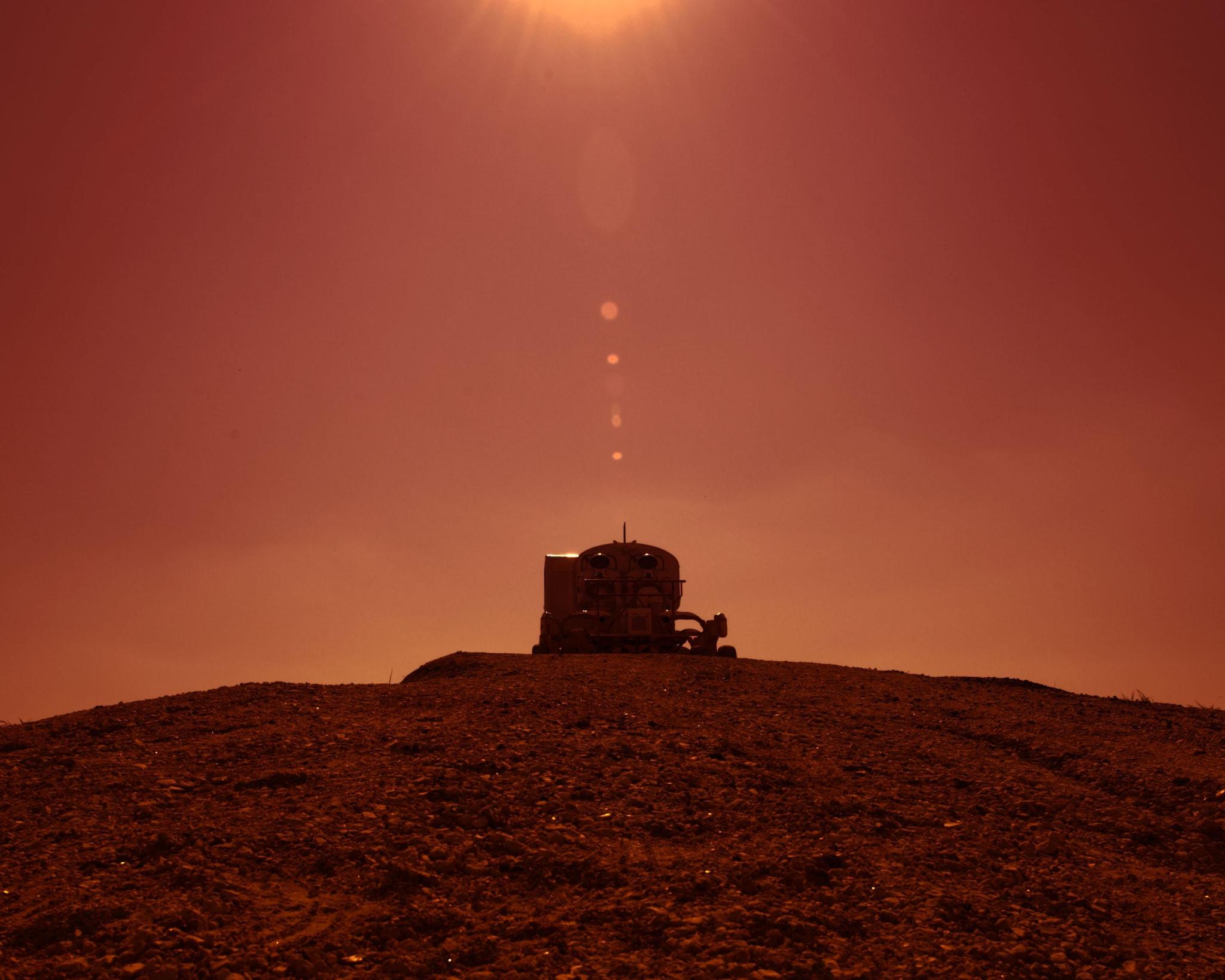It’s a common existential question: what is humanity’s place in the universe—and how did we get here? This thought consumes an elite brain trust of scientists who are identifying top science priorities for astronauts who will explore the Moon and Mars.
Earth is part of a system of planets formed together from the same solar disc. By investigating other planets, we can interpret our collective history, and possibly envision the future. While studying the Moon, astronauts will conduct investigations to help us better understand solar evolution and the history of water in the inner solar system, both of which are critical to understanding creation of life and the path we’re on now to the future.
What Can Earth Tell Us About Its Own History?
There’s still a lot to learn about Earth’s history through investigations here on the ground, but the very conditions that make our planet habitable also erase details of its distant past.

High Res Imagery of Comparative Magnetospheres
Earth has the strongest magnetosphere of all the rocky planets in the solar system. It shields us from harmful radiation and protects the atmosphere that cycles water and air. That life-sustaining safety blanket also contributes to Earth’s erosion, ultimately erasing some indicators of our planet’s geologic history. Rock cycles also help us understand what conditions helped form Earth’s unique features, as old crust continually melts and forms new crust, recycling water and other molecules back into the atmosphere through volcanism.
Even with these dynamic processes, geologists can extract core samples from some very special locations on Earth to peer into our distant past. For example, ice cores are time capsules, some giving a glimpse more than one million years into Earth’s past. Recently, a mile-deep ice core drilled at the South Pole has enabled an investigation 54,000 years into Earth’s climate history by revealing ancient stable water isotopologue, aerosol, and atmospheric gas records.
“Written human history is short in the context of the age of the Earth. Past records of the Earth show us how varied our own planet’s climate has been—from tropical worlds where crocodilians swam off the coast of Svalbard to ice planets where cities like Montreal were covered by miles of thick glacial ice,” said Allegra LeGrande, physical research scientist at NASA Goddard Institute for Space Studies.
The ice core records are special, in particular, because they preserve not only the principal means of these climate changes—alterations in greenhouse gas concentration preserved as fossilized atmospheric air in ice core bubble specimens, but also they show us how planetary temperatures were changing at the same time through proxy climate tracers like water isotopologues in the ice matrix itself.
Climate data maintained by the National Oceanic and Atmospheric Association currently dates to 1880. Investigating ice cores can expand these records by millions of years.
Let’s Dial it Back Another 4.5 Billion Years at the Moon

While origin theories vary, there is very little disagreement that Earth’s Moon most likely had a violent infancy. A recent finding—based on Apollo lunar samples that were sealed for more than 50 years to await new technologies to maximize their investigative value—found evidence that the Moon was created after another planet careened into a young, molten Earth. These findings support the “Giant Impact” theory that the Moon is a satellite spun from globs of both planets after impact.
“This is very exciting, because it means that parts of ancient Earth are locked away in the Moon,” said Jacob Bleacher, chief exploration scientist in the Human Exploration and Operations Mission Directorate at NASA Headquarters in Washington.
Earth’s robust dynamic processes did not convey to the Moon when the two parted ways, but there is evidence of an ultra-thin atmosphere, or exosphere, hovering over the lunar surface, and analysis shows that some moonquake activities have been detected by NASA’s Lunar Reconnaissance Orbiter.
According to Bleacher, the disruptions to geologic preservation would be minimal. “We still believe the Moon to be a reliable record of its own formation, as well as the Earth’s,” he noted. “The Moon is a 4.5-billion-year-old time capsule, pristinely preserved by the cold vacuum of space.”
While specific human-led investigations for each Artemis mission will be defined later, science priorities for future moonwalkers are taking shape, as outlined in the recent Artemis III Science Definition Team Report. The priorities are based in overarching objectives that aim to harness the unique lunar environment to increase our understanding of Earth, our solar system, and learn how to conduct compelling, long-term science far away from home.

Recent lunar robotic missions have already started the process of building a water map of the Moon, and upcoming Artemis robotic missions will continue to inform that map. NASA’s Volatiles Investigating Polar Exploration Rover, or VIPER, is a mobile robot that will hunt for water at the Moon, getting a close-up view of the location and concentration of water ice at the South Pole, where NASA plans to develop a base camp with commercial and international partners for long term scientific discovery and exploration. When astronauts arrive, they will be able drill deep core samples and preserve them at ultra-cold temperatures for research here on Earth.
“Carefully selected core samples from the Moon will preserve the stratigraphic and textural record that gets older as the core gets deeper,” said Bleacher. “From these types of samples, we can start to decipher Earth-Moon water sources, formation and impact processes, and begin dialing the clock back on space weather, including a long history of solar activities.”
Scientists have been tracking solar cycles since the mid-1800s, finding patterns in the Sun’s pendulum of stormy, radiation-spewing flares and its quiet, calmer periods. The somewhat predictable 11-year cycles place us in the current solar cycle 25—but the solar constant has changed over time, and there are hints of cycles of up to 210 years. What if these potentially longer cycles could tell us more about our climate?
“That would be good to know,” said Bleacher. “The intensity of solar storms that we’ve observed have the energy to disrupt satellite communications and create electrical surges on our power grid. If there is a trend of much longer cycles with far greater intensities, all of us on Earth would benefit from that knowledge.”
It All Starts on Earth
NASA’s Artemis era of human-robotic exploration at the Moon requires careful planning and practice here on Earth. Rigorous astronaut training will include geology expeditions at remote locations on Earth where they can practice the uniquely human capabilities that will be needed to safely and effectively explore the Moon.
“The way we learn how to do this exploration is by practicing on Earth,” said Bleacher, who also leads terrestrial astronaut field trainings in remote Earth locations. “Artemis astronauts will learn how to optimize their real-time observation capabilities, capitalizing on natural human predispositions for rapid decision making.”
To learn more about NASA’s Artemis program, visit:




























